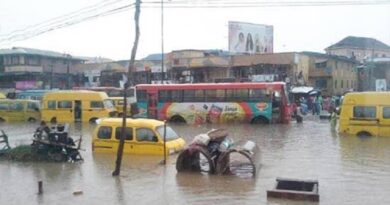Minamata Convention: Seven years of fighting toxic mercury, trade
The Minamata Convention on Mercury on Friday 16 August 2024 clock seven years of its existence fighting toxic mercury and trade. The Convention entered into force on 16th August 2017, on the 90th day after the date of deposit of the 50th instrument of ratification, acceptance, approval or accession.
The Convention was agreed at the fifth session of the Intergovernmental Negotiating Committee on mercury in Geneva, Switzerland at 7 a.m. on the morning of Saturday, 19 January 2013 and adopted later that year on 10 October 2013 at a Diplomatic Conference (Conference of Plenipotentiaries), held in Kumamoto, Japan.
Since the ratification of the Minamata Convention on Mercury in August 2017, its Parties have been making efforts to tackle the pressing issues surrounding toxic mercury. This highly hazardous chemical, found in many sectors, from skin-lightening cosmetics to artisanal and small-scale gold mining (ASGM), poses serious risks to both human health and the environment.
During a visit to the Philippines in early June, which included a mercury trade workshop organized by the Convention, Executive Secretary Monika Stankiewicz emphasized the importance of sustainable actions. “One goal for our work is to ensure that all the measures and all the actions we take actually have a lasting effect”, she said. “There are some good examples, such as the phase-out of mercury-added products, but we also have to recognize some challenges like the enforcement of the national regulations. For instance, skin-lightening products that contain mercury continue to be available in the market”.
Arlene Galvez, an adviser at the SAMACANO Small-Scale Miners Association in the Philippines, underlined that “the problem with the trading of mercury is a big issue: as long as there are sellers, there will be buyers”. This sentiment was echoed by Jam Lorenzo, policy development and research officer at BAN Toxics, who pointed out that; “in the Philippines, a lot of the mercury coming in is from illegal imports in the form of elemental mercury and mercury-added products such as skin-lightening cosmetics that contain mercury”.
A major driver of mercury demand is its use in artisanal and small-scale gold mining (ASGM), one of the main contributors of human-induced mercury pollution. Globally, 15 million miners work in ASGM, including 4-5 million women and children. 20% of world’s gold comes from ASGM, releasing approximately 2,000 tonnes of mercury into the environment every year.
While in the Philippines, the Secretariat visited mercury-free ASGM sites. Stankiewicz underscored the importance of dialogue and engagement at all levels: “It has been very revealing to visit several sites and talk to the miners and Indigenous Peoples’ communities, and one takeaway for me is how important it is to have appropriate national, provincial and local regulatory frameworks”.
The visit followed the Convention Secretariat’s participation in the planetGOLD Global Forum, a programme supported by the Global Environment Facility (GEF) to assist countries in implementing the Minamata Convention. Ludovic Bernaudat, programme manager at planetGOLD, stated that; “planetGOLD now is coming into the first phase. The first eight countries that participated in the programme are all finishing their child project as we speak. To date, we can confidently measure that we have avoided 30 tonnes of mercury emitted to the environment with these eight countries. We have trained about 17,000 miners directly, and there are all the steps are being put into the programme so that this continues beyond the project lifetime”.
Stankiewicz emphasized that the engagement of stakeholders is really key for success of conventions like Minamata, adding that; “the engagement of stakeholders is really key for success of conventions like the Minamata Convention, and there is a particular need related to ASGM sector to involve Indigenous Peoples as well as local communities in the work, and that is both the development of the Minamata National Action Plans (NAPs) for ASGM and their implementation”.
Sarah Marie Pante-Aviado, information officer of the Camarines Norte Provincial Government, stressed the importance of collaboration, including; “working honestly and closely with women, Indigenous Peoples, large-scale miners and youth is very important. The Minamata National Action Plan will help us link the efforts of the local level to the national level, which will facilitate formalization and implementation”.
As the global community continues to combat mercury pollution, insights from the Philippines visit highlight the ongoing need to translate plans into sustainable, impactful actions. The success of these implementation efforts will depend on the capacity to tailor strategies to diverse contexts and needs, with National Action Plans playing a key role in shaping these efforts on the ground.
The Executive Secretary concluded that; “these action plans should, of course, not be documents to put on a shelf but should be built on the knowledge of the miners, Indigenous Peoples and local communities. They should be adaptable and empower local governments to find solutions that suited to their specific circumstances”.
Major highlights of the Minamata Convention include a ban on new mercury mines, the phase-out of existing ones, the phase-out and phase-down of mercury use in a number of products and processes, control measures on emissions to air and on releases to land and water, and the regulation of the informal sector of artisanal and small-scale gold mining. The Convention also addresses interim storage of mercury and its disposal once it becomes waste, sites contaminated by mercury as well as health issues.




